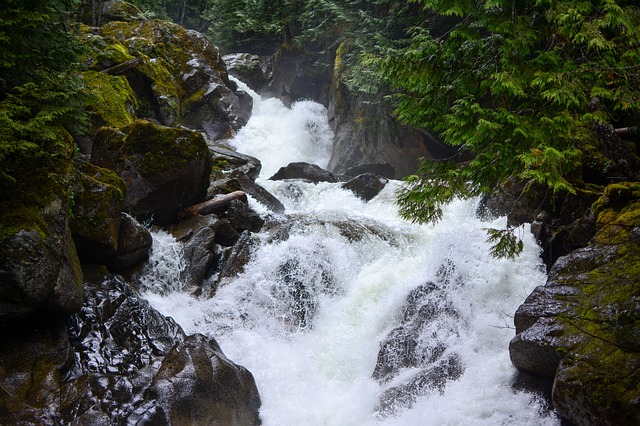River velocity is influenced by several factors such as:
Gradient
Steep gradients increase the kinetic energy of a river and therefore speed
Roughness/Load
If the channel bed is colonized by large boulders velocity can significantly decrease as water flows on a rough jagged terrain.
Boulders are mainly found in the upper course and they can significantly decrease river velocity especially during dry seasons.But after a heavy storm velocity is reduced slightly.
Obstacles
Obstacles such as vegetation can decrease a river’s velocity.
Channel Shape
Wide shallow channels are less efficient and have low velocities than deep narrow channels. This can be illustrated by the hydraulic radius of a stream (the flow depth of water). High hydraulic radius means a stream is more efficient and fast flowing.
Hydraulic radius is calculated by dividing the cross sectional area of the channel by the wetted perimeter of the channel. The wetted perimeter is the water that is in contact with the channel bed and sides.

Stream B is more efficient than A
Different methods of measuring velocity has been put forth. The Chèzy equation measures velocity by relating gradient, hydraulic radius and coefficients of gravitational and frictional forces.
The Manning equation calculates velocity by relating hydraulic radius, gradient and the Manning roughness coefficient (v = Rs/n R is hydraulic radius, s is gradient and n the Manning Coefficient). However, these equations measures mean velocities not the actual velocity.
Types of Flows
Turbulent Flow are characterised by violent eddy flows. They usually occur in fast moving waters and boulder colonized streams. Water collides and deflect on these boulders creating hydraulic jumps and drops. Eddies with pebbles may drill the river’s bed creating potholes.

Hellicoidal FlowA type of turbulent flow that sway sideways in a river.
Laminar flows are very rare and almost negligible. They involve straight and fluent flows. Usually laminar flows are induced by humans when straightening rivers to reduce floods.
